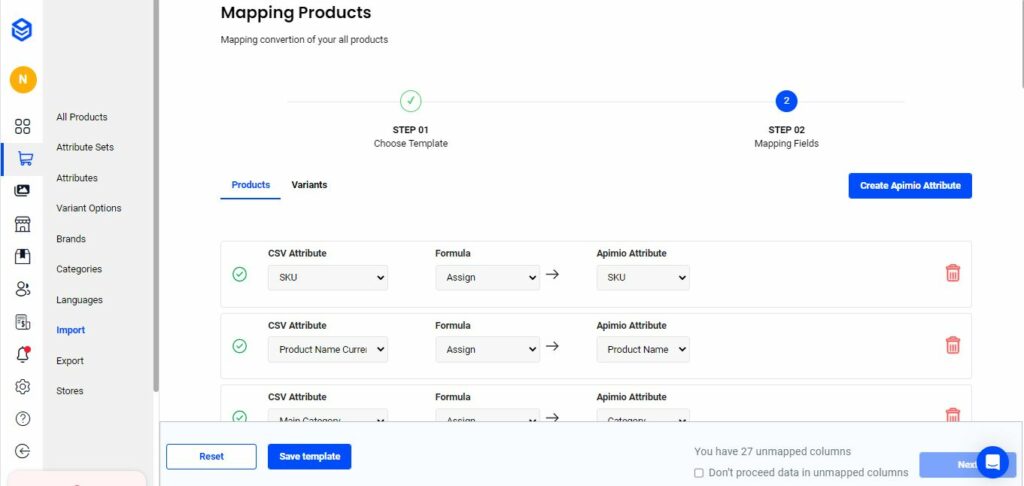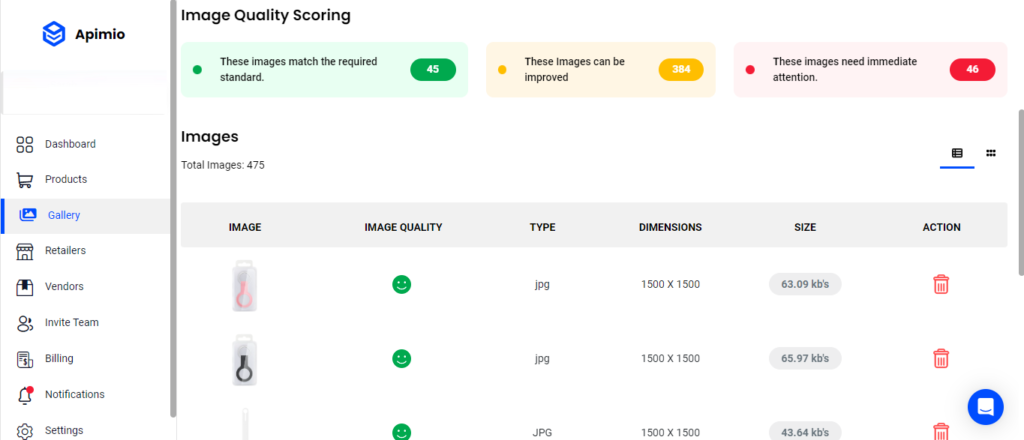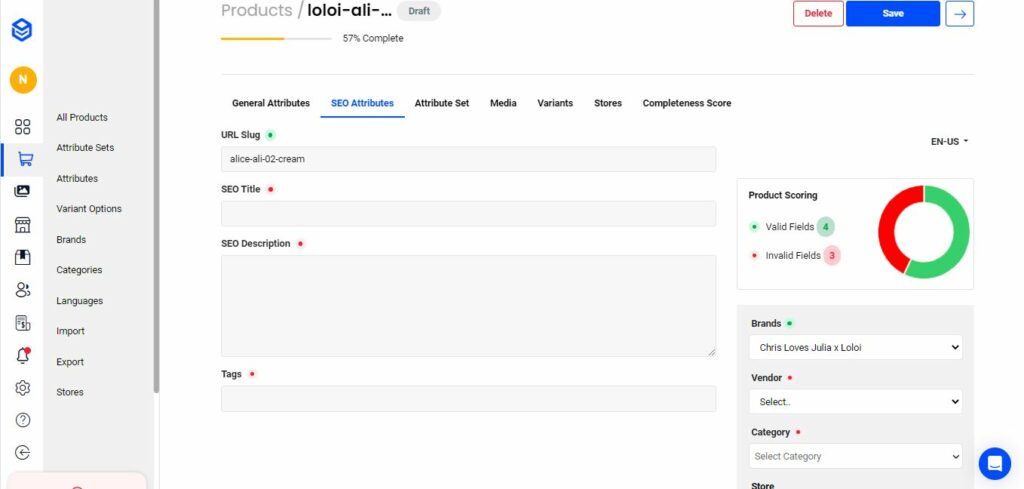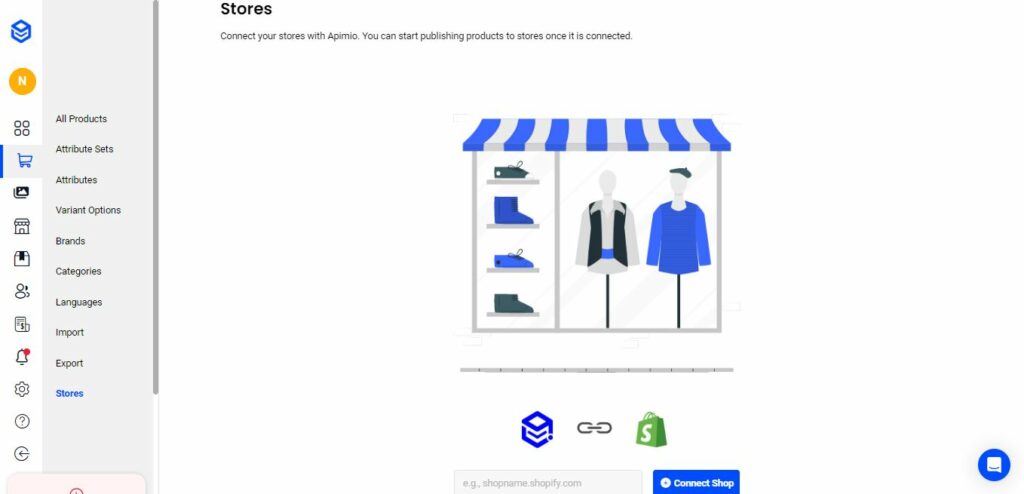Have you ever wondered why some online stores manage to capture your attention and make you scroll through their products, while others don’t?
The secret often lies in how they present their product information. Creating an engaging and informative online product catalog is crucial for e-commerce success.
However, it’s important to note that while Apimio doesn’t directly create your product catalog, however it plays an important role in simplifying and enhancing the process.
In this blog post, we will provide a comprehensive guide on how to make the best online product catalog. By the end of this blog, you’ll have all the tools you need to create an exceptional online product catalog that will help your business succeed.
Want to take your product catalog game to the next level? Check out our blog on product catalogs, where we cover everything from creating the perfect layout to the tips and tricks to follow.
What are the steps to make a product catalog?
If you’re looking to create a product catalog using Apimio, these are the several steps you need to follow to ensure your catalog is compelling and engaging.
1. Understand your target audience
The first step in creating a successful online product catalog with Apimio is understanding your target audience.
This involves identifying the people you want to reach with your product catalog and understanding their needs and preferences.

By understanding your target audience, you can create a product catalog that resonates with them and provides the information they need to make informed purchase decisions.
Conduct market research to identify your target audience’s demographics, such as age, gender, income, and geographic location. Once you have this information, consider their preferences for product information and presentation.
- Do they prefer a minimalist design or a more detailed approach?
- Are they interested in product videos or 360-degree views?
- What type of information do they need to make a purchase decision?
When creating your catalog, it’s important to consider your target audience. For example, if they prefer an organized layout, including more visuals like images and videos may be beneficial. Or, if they are budget-conscious, highlighting discounts and promotions could be effective.
Streamline your product catalog creation process with Apimio
Apimio makes it easy to organize, categorize, and present your products in a way that resonates with your target audience.
2. Organize Your Product Information
After identifying your target audience and their preferences, the next step is to use Apimio to organize your product information.
Apimio enables centralized management of all product information, ensuring consistency across all channels.
To begin, categorize your products into categories and subcategories for easy browsing by customers. Next, ensure that all essential product information, such as pricing, images, and descriptions, is included.

You can use workflows to ensure accurate and consistent data entry, and Apimio’s data modeling features will capture all necessary product attributes.

By organizing your product data with Apimio, you can create a user-friendly catalog that provides customers with all the information they need to make a purchase decision.
3. Enhance Your Product Presentation
Once you have organized your product information with Apimio, the next step is to enhance your product presentation. How your products are presented can greatly impact customers’ perception and likelihood of making a purchase.
One of the most important ways to improve your product presentation is by using high-quality product images. These images should be clear, well-lit, and show your products from various angles.
Apimio allows you to store and manage all your product images in one place, ensuring consistency and quality.

To provide customers with a more immersive experience, you can include videos or 360-degree views in addition to images. This way, they can better understand the product and reduce the likelihood of returns.
With Apimio, you can easily upload and manage product videos and 360-degree views, creating a more engaging product catalog.
4. Optimize for Search Engines
Optimizing your product catalog for search engines is important to boost your website’s traffic and sales. You can achieve this by using keywords and meta tags to help search engines understand your catalog’s content.
With Apimio, you can easily add meta tags and descriptions to your product pages, making them more search engine-friendly. You can also use Apimio’s SEO features to optimize URLs and images by including alt tags. This will increase the search visibility of your product pages.

Furthermore, ensuring that your product catalog is responsive and mobile-friendly is important. This means that your catalog should be easily accessible and viewable on all devices, including smartphones and tablets.
You can achieve this by using Apimio’s responsive design templates to ensure your catalog looks great on any device. By optimizing your product inventory for web crawlers and making it versatile, you’ll be able to reach a wider audience and drive more sales.
Don’t waste any more time juggling multiple spreadsheets and databases.
Book a demo with Apimio, and let us show you how to streamline your product information management!

5. Connect to Another Platform
Apimio PIM makes it easy to synchronize your product catalog across all of your sales channels with just a few clicks, without the need for manual uploading.
You can select which fields and tables you want to connect with other platforms, allowing you to customize your product information to meet the requirements of each channel.

This information is sent to e-commerce platforms such as Shopify in real-time, making it effortless to update your product catalog across all your selling channels.
6. Export catalog to Catalog Making Software
You can easily convert your product catalogs to PDF using the catalog maker plugin in combination with Apimio. This plugin lets you transfer product content directly from your PIM to catalog maker software, saving your design team time and effort.
With Apimio, you can also instantly create Excel and CSV files with the content you select from a catalog, eliminating the need for a separate file conversion program.
This makes it simple to share product information with internal teams or external businesses in their preferred format. Using Apimio, you can efficiently create and distribute your product lists across various channels, reaching a broader audience.
Conclusion
Your product catalog is a valuable tool for your marketing and product teams. By creating a top-quality digital catalog, you can get significant benefits with a little hard work and dedication.
Utilizing your B2B or ecommerce catalog, you can conduct customer research and set clear goals to boost sales and enhance customer experience.
You can streamline the process of designing and managing your product catalog with Apimio PIM, ensuring that product data and design meet your team’s objectives.
With Apimio PIM, you can also centralize your media assets and easily access and share them across your teams.
What to do next?
- To manage product attributes efficiently, refer to our blog “How PIM helps manage Product Attributes”
- To make the most out of the product catalog software, PIM head on to our blog “Product Catalogs: How to create & manage them”
- Revolutionize your product management strategy and skyrocket your online sales with Apimio PIM – Sign up now
- Read more about our Product Information-related Guides here.
- Contact our support or comment your thoughts under the blog section if you have any further questions.
Frequently Asked Questions
You can optimize your product catalog for search engines using Apimio PIM by using relevant keywords and meta tags, optimizing your product pages for mobile devices, and using Apimio PIM’s SEO features to improve your product pages’ search visibility.
Yes, you can customize your product information to fit the requirements of different platforms using Apimio PIM. It allows you to select which fields and tables you want to connect to other platforms, so you can customize your product information to fit the requirements of each channel.



